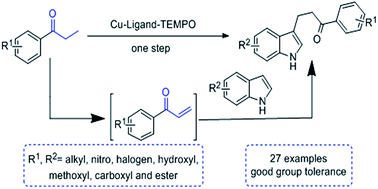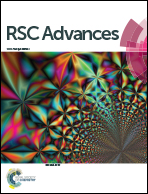Cu-catalyzed β-functionalization of saturated ketones with indoles: a one-step synthesis of C3-substituted indoles†
Abstract
An effective one-pot synthesis of β-indolylketones from saturated ketones and indoles was developed. It is noteworthy that this methodology has a good functional group tolerance (alkyl, nitro, halogen, hydroxyl, methoxyl, carboxyl and ester) and is of great significance to the preparation of many indole heterocycles.

- This article is part of the themed collection: Elegant Synthetic Routes to Indole Derivatives


 Please wait while we load your content...
Please wait while we load your content...